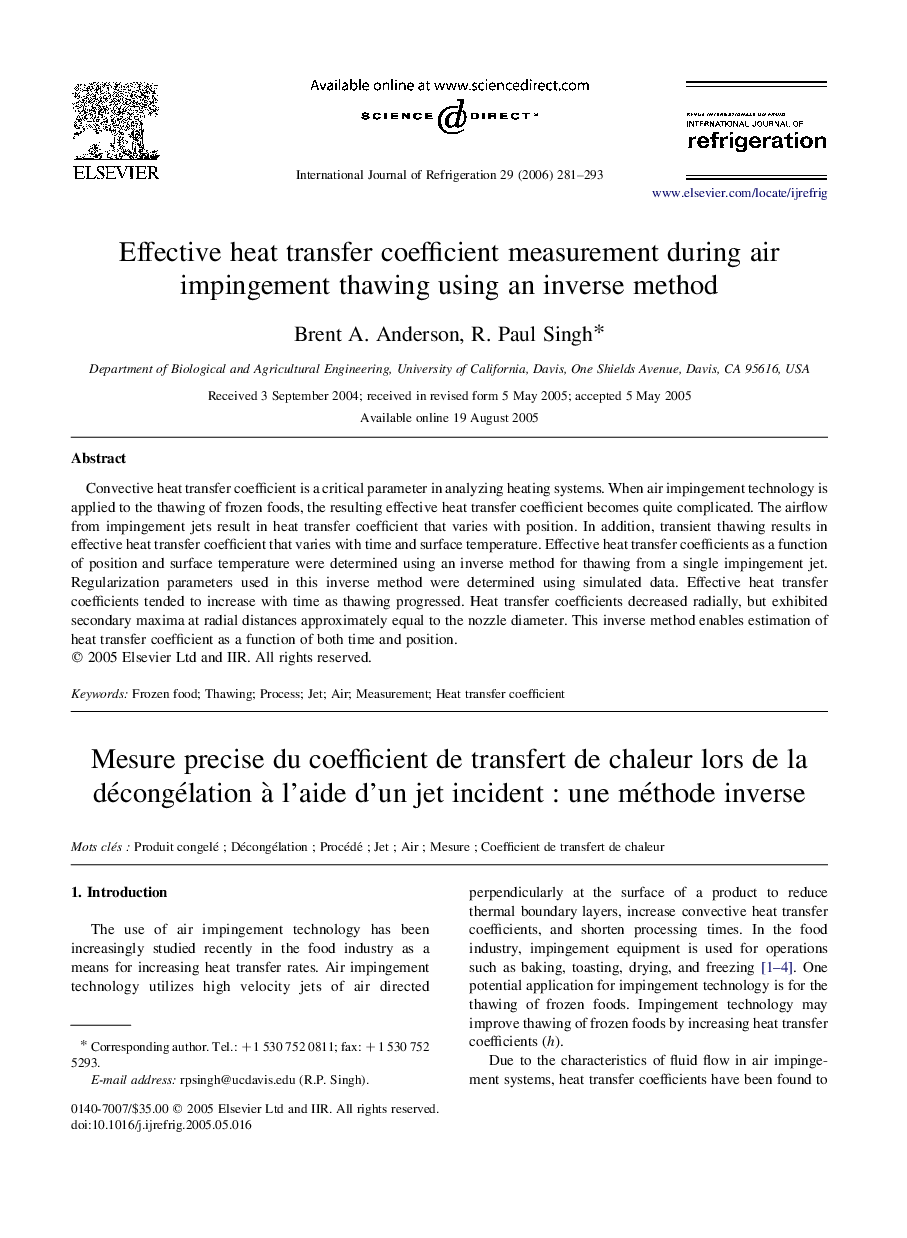| Article ID | Journal | Published Year | Pages | File Type |
|---|---|---|---|---|
| 793013 | International Journal of Refrigeration | 2006 | 13 Pages |
Convective heat transfer coefficient is a critical parameter in analyzing heating systems. When air impingement technology is applied to the thawing of frozen foods, the resulting effective heat transfer coefficient becomes quite complicated. The airflow from impingement jets result in heat transfer coefficient that varies with position. In addition, transient thawing results in effective heat transfer coefficient that varies with time and surface temperature. Effective heat transfer coefficients as a function of position and surface temperature were determined using an inverse method for thawing from a single impingement jet. Regularization parameters used in this inverse method were determined using simulated data. Effective heat transfer coefficients tended to increase with time as thawing progressed. Heat transfer coefficients decreased radially, but exhibited secondary maxima at radial distances approximately equal to the nozzle diameter. This inverse method enables estimation of heat transfer coefficient as a function of both time and position.
